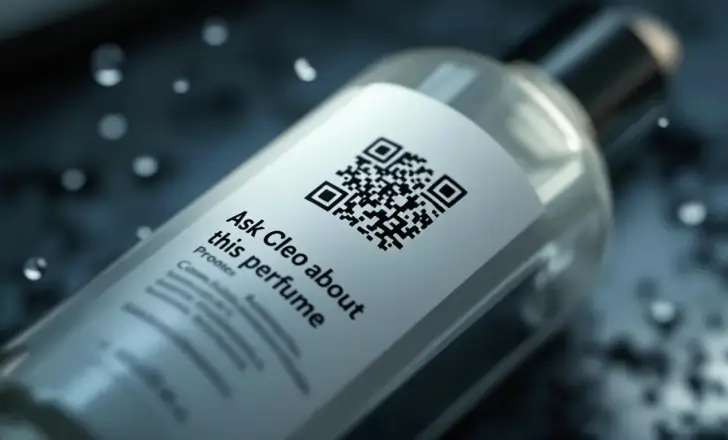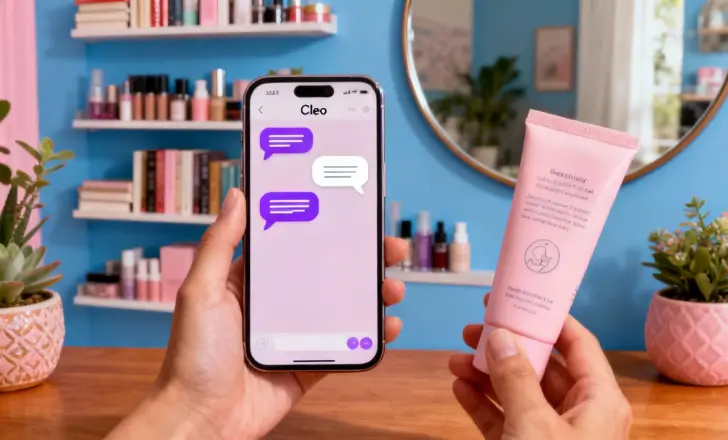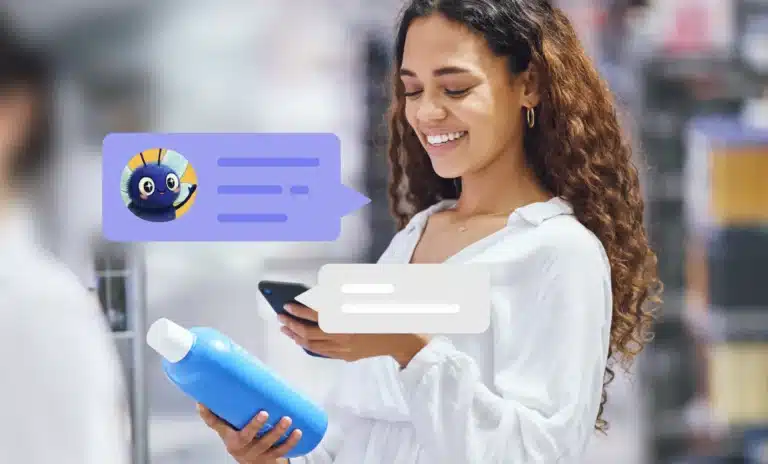This article is part of our exploration of how QR technology is evolving. At QRCodeKIT, we’ve seen how dynamic QR codes became the foundation for innovations like conversational packaging, where every scan starts a real dialogue between brands and consumers.
For the first time, packaging is becoming part of the conversation. With conversational packaging, brands can transform a simple QR code into a living, responsive touchpoint — a gateway where consumers can ask, learn, and interact in real time. The idea bridges the physical and digital worlds, creating an interactive experience that feels human and delivers instant, personalized responses.
This shift is being driven by Digital Link, whose AI-powered product assistant, Cleo, stands at the center of what the company calls the conversational packaging initiative. As Digital Link CEO Paula Rivero described during a live event, “packaging should not only inform — it should respond.” Her vision captures the essence of a new era where product labels evolve into intelligent systems capable of understanding and engaging with consumers.
How Digital Link and QR codes power conversational packaging
Behind every conversational experience lies a simple QR code — but with an extraordinary twist. Through the Digital Link standard, these codes unlock smart product pages that speak directly to users. When someone scans a label, they access a digital product passport offering safety data, origin details, or personalized tips. Thanks to Cleo, the AI-powered product assistant, these responses adapt in real time to each user’s context, from language to location or even personal needs.
This integration marks a leap forward from traditional packaging. It merges design and communication into a single digital ecosystem where packaging acts as both a messenger and a guide. Instead of reading static text, consumers experience a fluid, voice-like dialogue — a form of conversational AI that feels personal and intuitive.

Inside an AI-enabled conversational product
The best example of this technology in action is the AI-enabled conversational product. When customers scan a QR on a face cream package, Cleo might explain its ingredients, suggest application routines, or clarify safety details for pregnant women. A gin bottle could offer cocktail recipes, pairing ideas, or reminders about responsible consumption. These experiences feel natural because they’re powered by active digital agents that process intent and context, offering relevant answers instantly.
This capability redefines how consumers perceive packaging. It’s not a gimmick or a marketing add-on — it’s a communication layer that enables consumers to access the information they need, while helping brands minimise support expenses through self-service interaction.
The evolution of conversational product packaging
Conversational product packaging marks a fundamental shift from the static to the intelligent. Traditional labels have always been one-directional, presenting data without listening. Now, powered by AI and Digital Link, packaging becomes a two-way dialogue — a system capable of learning, adapting, and communicating naturally.
By scanning a QR, consumers receive context-aware guidance: preparation instructions, real-time details, or compliance information that matches their preferences. For brands, every interaction generates valuable consumer behaviour insights, helping them refine communication and predict what customers expect. This evolution turns packaging into a living, learning medium — one that connects information, intelligence, and emotion.

Real-world e-commerce applications
The applications of conversational packaging go far beyond physical retail. In e-commerce, it opens up opportunities for direct engagement post-purchase. When a consumer receives a product at home, scanning the QR doesn’t just confirm authenticity — it unlocks ongoing interaction. They might receive Cleo’s friendly reminders, customised advice, or educational videos relevant to their specific product.
During a company’s demonstration highlighted at a recent event, Digital Link achieved a new milestone: showing how conversational packaging can scale across both physical products and online marketplaces. The live demonstration included cosmetics, beverages, and electronics, illustrating how the same conversational model adapts across categories to deliver consistency, safety, and engagement.
The vision of Paula Rivero and the future of Digital Link
At the heart of this innovation is Paula Rivero, Digital Link’s co-founder and CEO, whose leadership has positioned conversational packaging as a cornerstone of smarter commerce. Under her direction, the conversational packaging initiative has evolved into a scalable framework for brands worldwide. Rivero often emphasizes that this technology isn’t just about AI — it’s about creating packaging that feels human.
By combining Digital Link infrastructure with natural language models, her team has built a platform that allows brands to provide instant access to authenticity data, certifications, or sustainability claims. The system ensures compliance while maintaining an approachable tone — a balance of transparency and empathy that consumers increasingly expect from modern brands.
If you’d like to hear Paula Rivero explain this vision in her own words, don’t miss the short talk below — a glimpse into how Digital Link is shaping the future of packaging communication.
Why conversational packaging represents a true shift
The rise of conversational packaging redefines what packaging can be. It’s not a passive object but an intelligent interface capable of dialogue. AI-enabled conversational products are shaping a new form of brand communication where consumers interact, ask questions, and receive real-time details in seconds.
This technology doesn’t replace human service — it enhances it, ensuring that each interaction feels seamless and reliable. For brands, it means less friction, richer analytics, and a deeper understanding of their audience. For consumers, it means clarity, confidence, and connection.
What comes next for brands adopting conversational packaging?
The next step is clear: conversational packaging will soon become the standard for product communication. From e-commerce listings to store shelves, QR codes will no longer be silent — they’ll speak, guide, and listen. Cleo and other AI-powered product assistants are showing how this tech represents the future of commerce: accessible, transparent, and always responsive.
For the first time, packaging doesn’t just describe the product — it joins the conversation.
